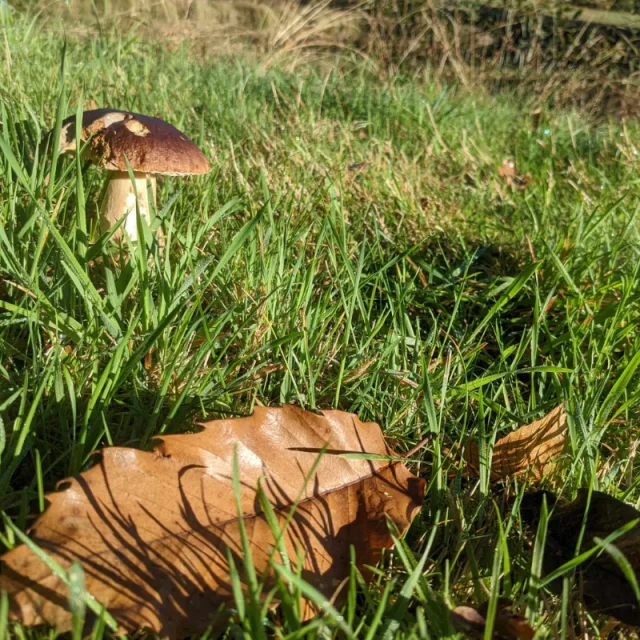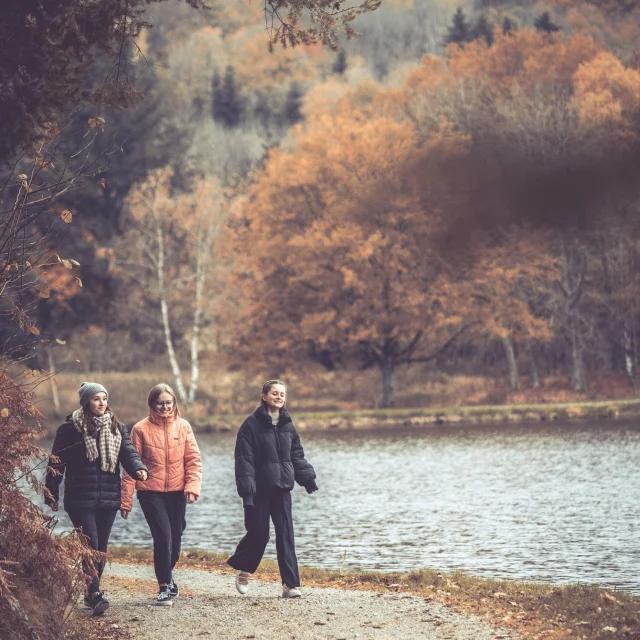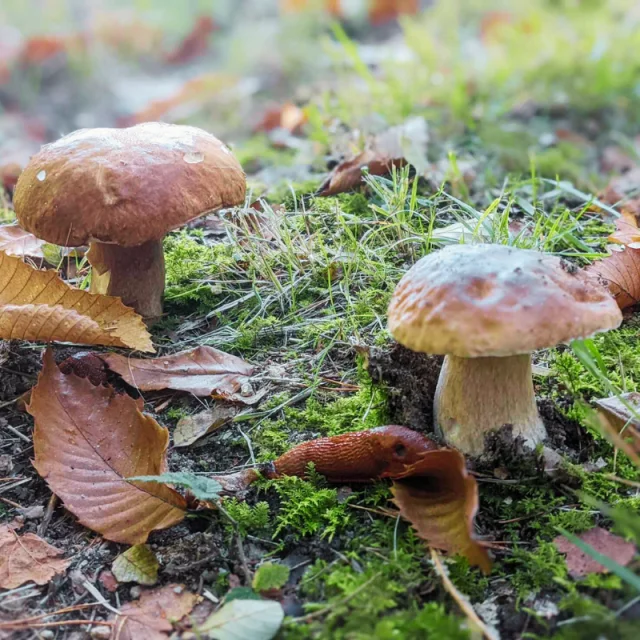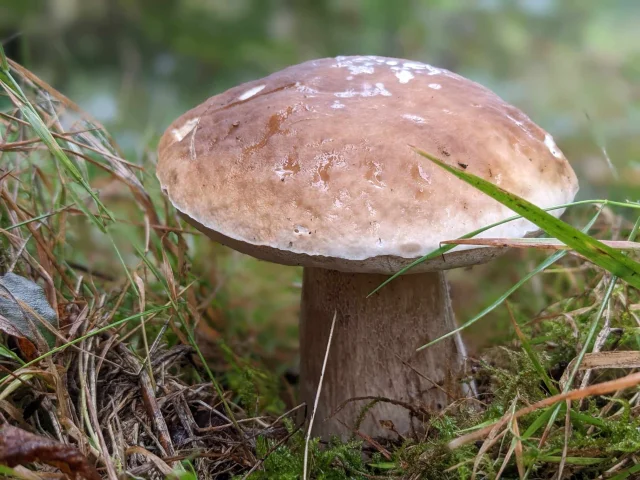 Cueillette Cepe Limousinclotilde Benni
Cueillette Cepe Limousinclotilde Benni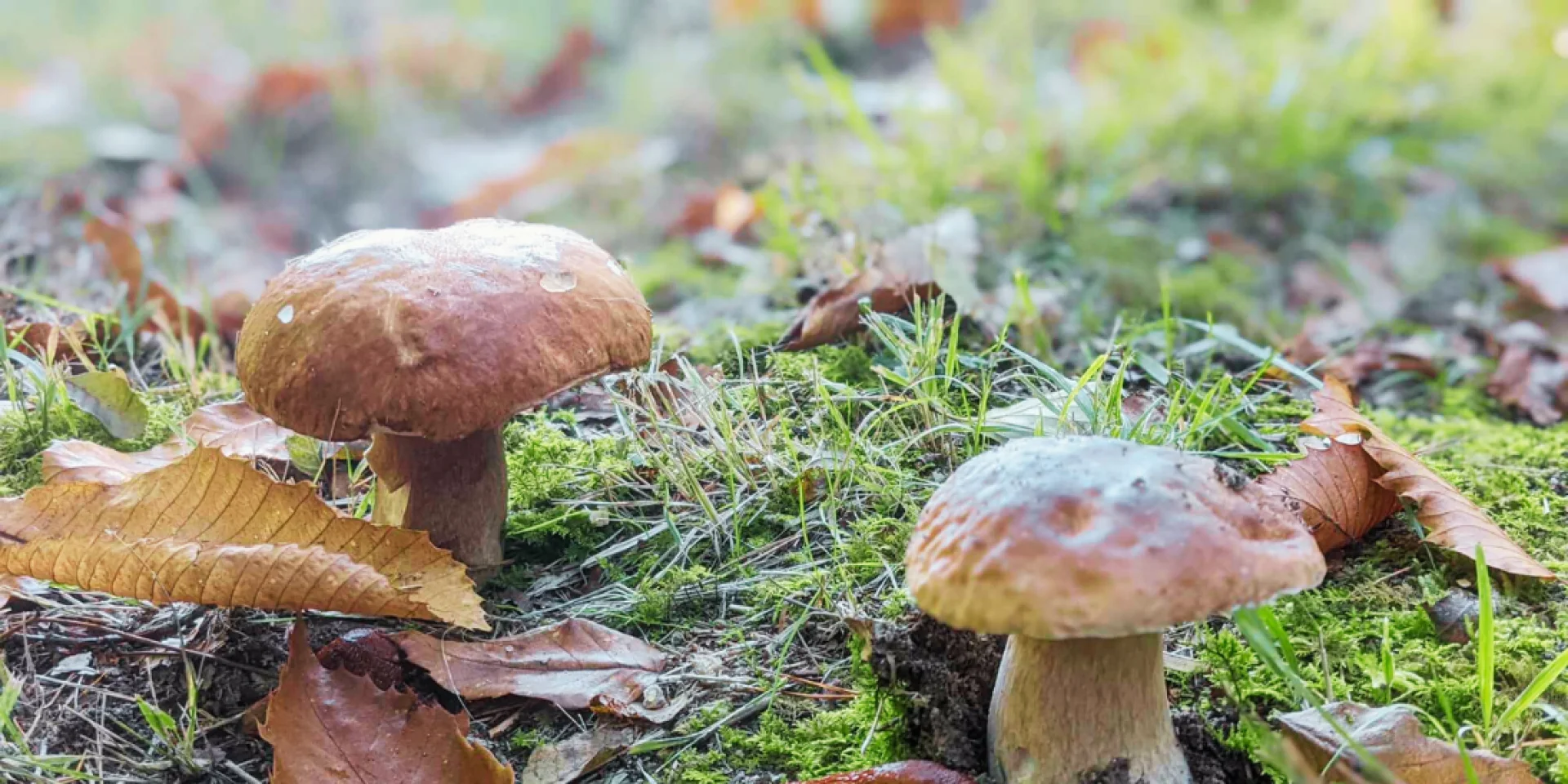 Cepesclotilde Benni mushroom
Cepesclotilde Benni mushroom Cueillette Cepe Limousinclotilde Benni
Cueillette Cepe Limousinclotilde BenniPorcini mushrooms
Boletus edulisIt’s Limousin’s favorite mushroom! With its large, convex, thick cap, firm when young and soft thereafter, its swollen foot and its thick, white flesh that’s very tasty, it’s the one for which we don’t hesitate to spend hours surveying the forest with our basket, whatever the weather. 🍄🟫🧺 To be precise, let’s talk about them in the plural, as there are four varieties: the bronzed boletus, the burgundy boletus, the pine boletus and the summer boletus. All edible and, above all, all excellent! They can be found in coniferous and mixed woods, under spruce trees in autumn, at the foot of birch and pine trees, but above all, at the foot of oak trees.
Whether cooked, raw or dried, ceps are excellent. Some find it smells like hazelnuts 😋
Click on the little extra for a recipe idea!
Le rosé des prés
Agaricus campestrisVelvety white cap, tight, pinkish blades, short, thin, slightly cylindrical foot with a ring, firm, white flesh that turns pink when cut, this is a tasty mushroom with a scent of plum or freshly cut wood. 🪵
🩷 Nicknamed Rosé des prés, Agaric champêtre, Psalliote champêtre, Champignon de rosée, Souris rose or Petit rosé, it is found in abundance in grazed meadows, fresh lawns and roadsides. It’s an excellent edible, especially when young. It should be eaten when its blades are quite pink. It’s the mushroom’s cousin! Raw, cooked, grilled, sautéed, pan-fried, in salads: meadow rosé can be eaten in a multitude of ways.
Click on the little extra for a recipe idea!
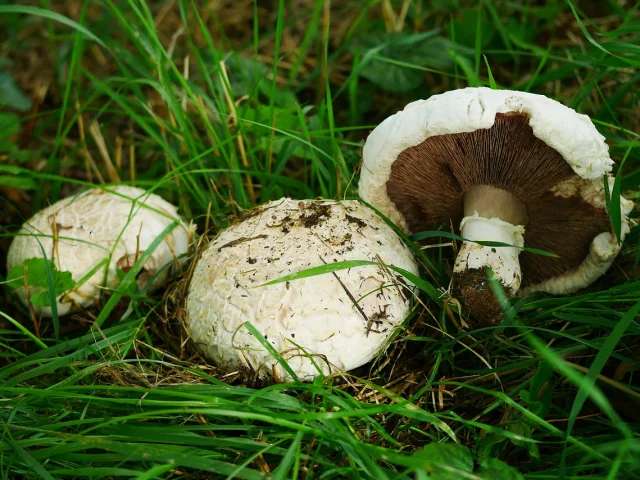 Roses Des Presebay Thehappybotanist
Roses Des Presebay Thehappybotanist Girollessandra M H
Girollessandra M HThe chanterelle
Cantharellus cibarius💛 With its bright yellow cap, firm yellow flesh, irregular folds on the underside and pleasant fruity apricot scent, the popular chanterelle needs no introduction.
This highly prized mushroom is harvested from the first thunderstorms of June through to late autumn, on the damp mosses of deciduous and coniferous undergrowth. Chanterelles are generally found in bands, sometimes in “witches’ circles”, in the same place over several years. This is how chanterelle nooks are jealously guarded… 🍀 If you find one, you’re in luck!
It’s an excellent edible, rarely attacked by pests and lends itself to many culinary preparations.
Click on the little extra for a recipe idea!
Chanterelle
Craterellus tubaeformisVery common in coniferous forests in autumn, the tube chanterelle is often confused with the wallflower. There are a few differences, however, starting with its duller, less bright-yellow color than the chanterelle. It has a small, fluffy, funnel-shaped cap, a tubular foot and wide, spaced folds under the cap.
It can be found in groups in our Limousin forests from July to October or even November, in deciduous woods and pine forests, in damp, moss-covered places. It is a little less tasty than the girolle, but that’s a matter of taste, and can be found in greater numbers. It does, however, have good cooking qualities.
Click on the little extra for a recipe idea!
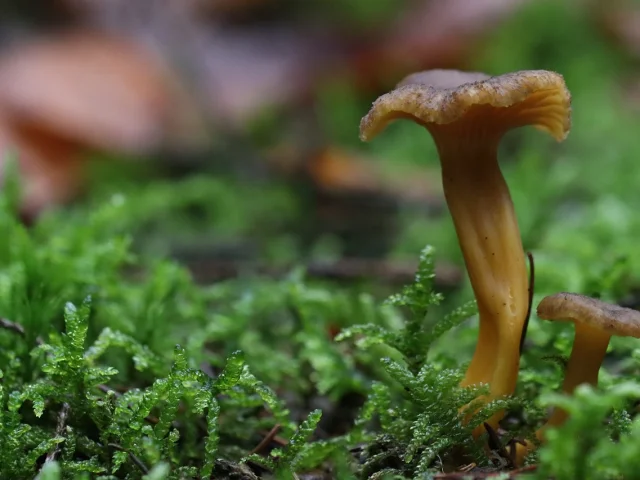 Chanterellessinason
Chanterellessinason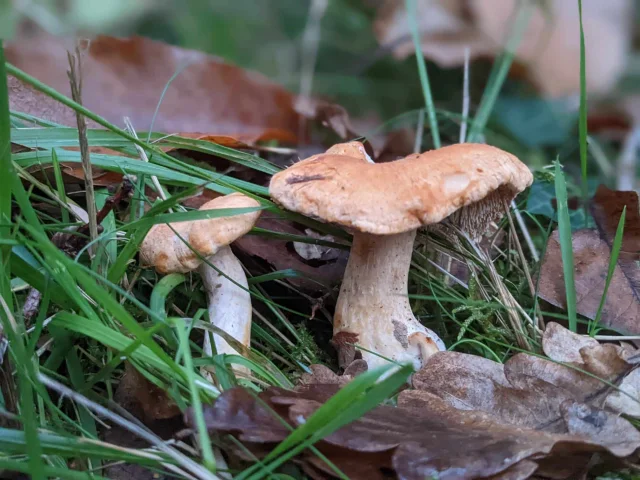 Pieds De Moutonsclotildebenni
Pieds De MoutonsclotildebenniSheep's foot
Hydnum repandumSheep’s foot, also known as Hydne sinué, is such an original mushroom that it’s easy to recognize. It has a cream-colored cap, lined underneath with small white prickles (one of the few to have them). It’s a mushroom with white-orange flesh, which grows at the end of summer, mostly on acidic soil, most often under oaks and beeches.
It’s an excellent mushroom, much sought-after for its pleasant flavor. However, it can be bitter. So here’s a little advice: pick the youngest mushrooms and remove the prickles when cooking, as they concentrate most of the bitterness.
Click on the little extra for a recipe idea!
The trumpet of death
Craterellus cornucopioidesContrary to its name, the trumpet of death is perfectly edible! Sometimes nicknamed the “poor man’s truffle”, it takes its name from its black trumpet-shaped cap. It often grows in clusters at the foot of deciduous trees such as beech, oak and hazel, or more often on mossy, damp slopes.
Its beautiful black color turns to ash gray with age. It’s a very fragrant mushroom, with very fine flesh that’s a little tough, but which withstands drying perfectly. As a result, it can be stored for a long time and used in many dishes! 🍽️
Click on the little extra for a recipe idea!
 Cueillette Sauvage En Foretkaterinavulcova
Cueillette Sauvage En Foretkaterinavulcova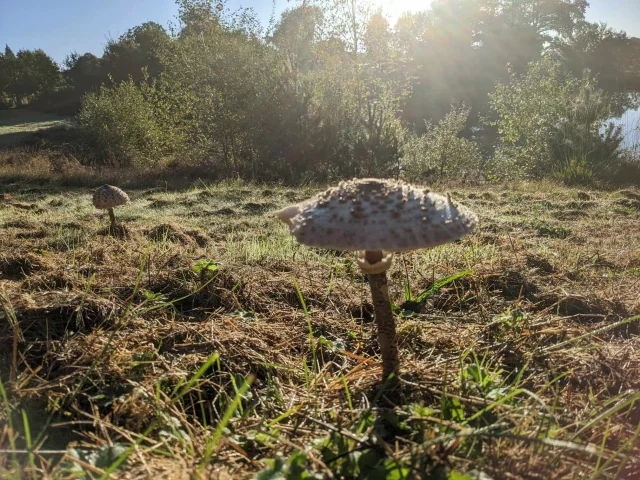 Coulmellesclotildebenni
CoulmellesclotildebenniLa coulemelle
Macrolepiota proceraThe coulemella, also known as the high lepisote, is a large mushroom that can grow up to 40 cm. When young, it resembles a drumstick, and when mature, its cap unfurls in the shape of a parasol or umbrella, topped with small circular brown scales. It has a long, thin stalk, which is not eaten because it is too fibrous. 🍄🟫😋
In Limousin, it’s often found in meadows, but it’s not uncommon for it to grow in deciduous forests, often under beech trees, preferably in the grass. Its tender, white flesh has a fruity odor and nutty flavor.
Click on the little extra for a recipe idea!
The Amanite of the Caesars
Amanita caesareaThe rarest for last (hunger)! The amanite des césars, or oronge, is a rare mushroom with a reputation for excellent edibility. Everything about it can be eaten: its cap, stalk and volva.
🥚🐣 A curious mushroom, it first grows as a white egg, then emerges from its volva to reveal a bright orange, bladed cap with a sturdy, ringed foot. The flesh is firm, thick and fleshy, orange on the surface and white when cut, with a nutty aroma. It was once said to be the preserve of Roman emperors. It’s a southern mushroom, found in light, sunny oak and chestnut woods. A mushroom perfectly suited to southern Haute-Vienne! Yet it’s hard to find. If, by chance, one of them leaps into your basket, don’t hesitate to share it, raw or cooked, as oronges are rarely eaten more than once in a lifetime.
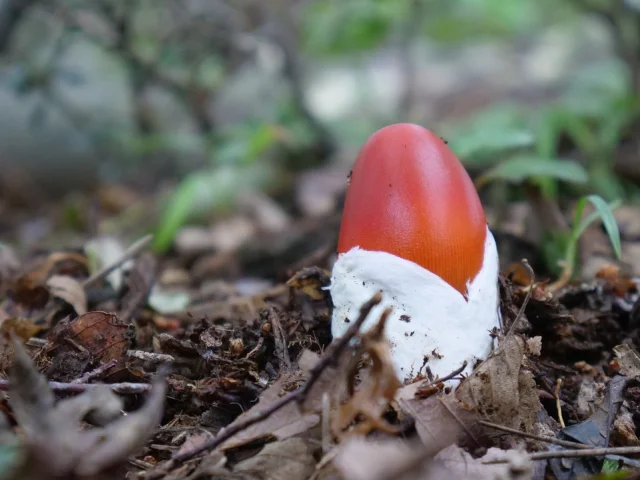 Amanite Des Cesarsdocujeju
Amanite Des Cesarsdocujeju